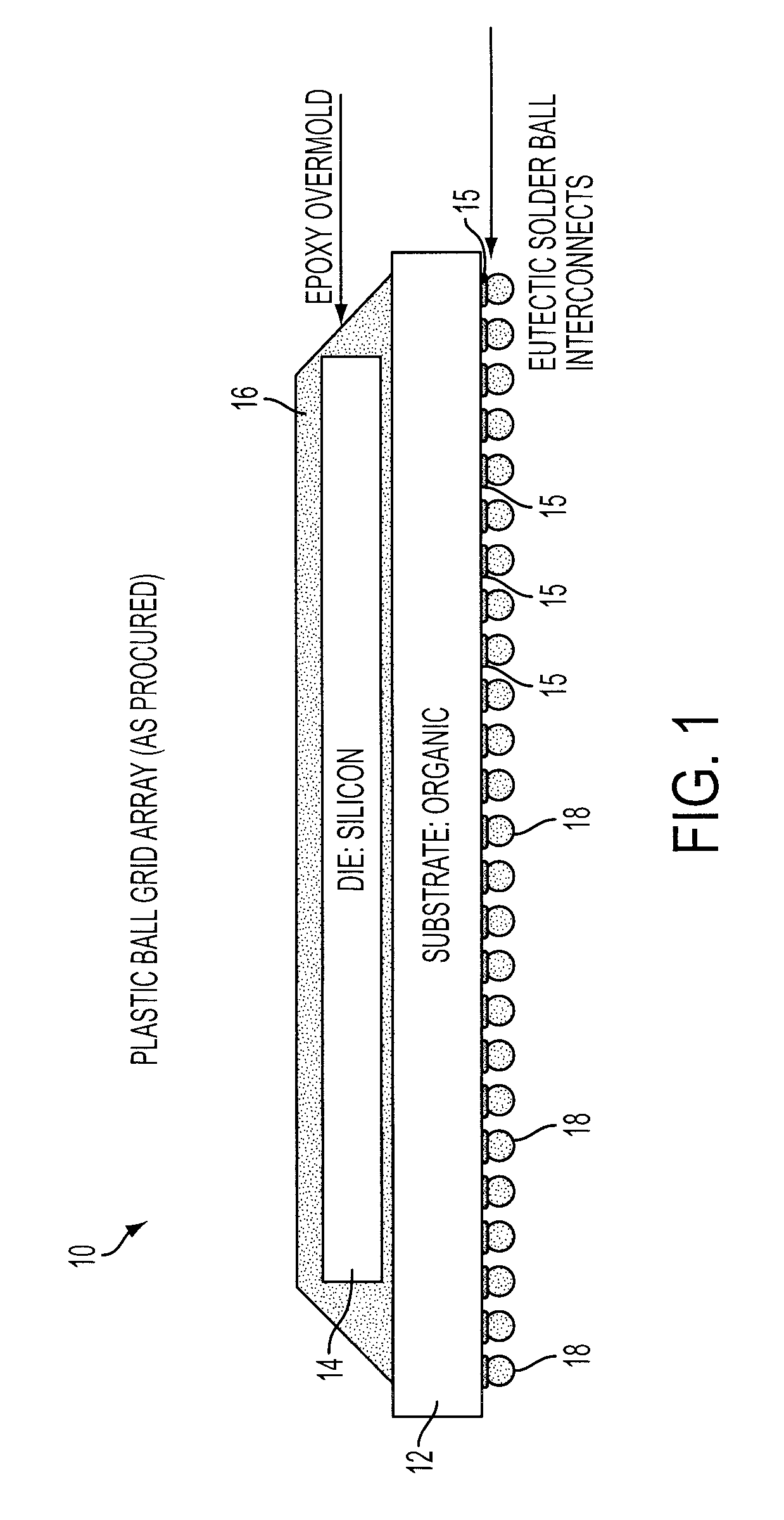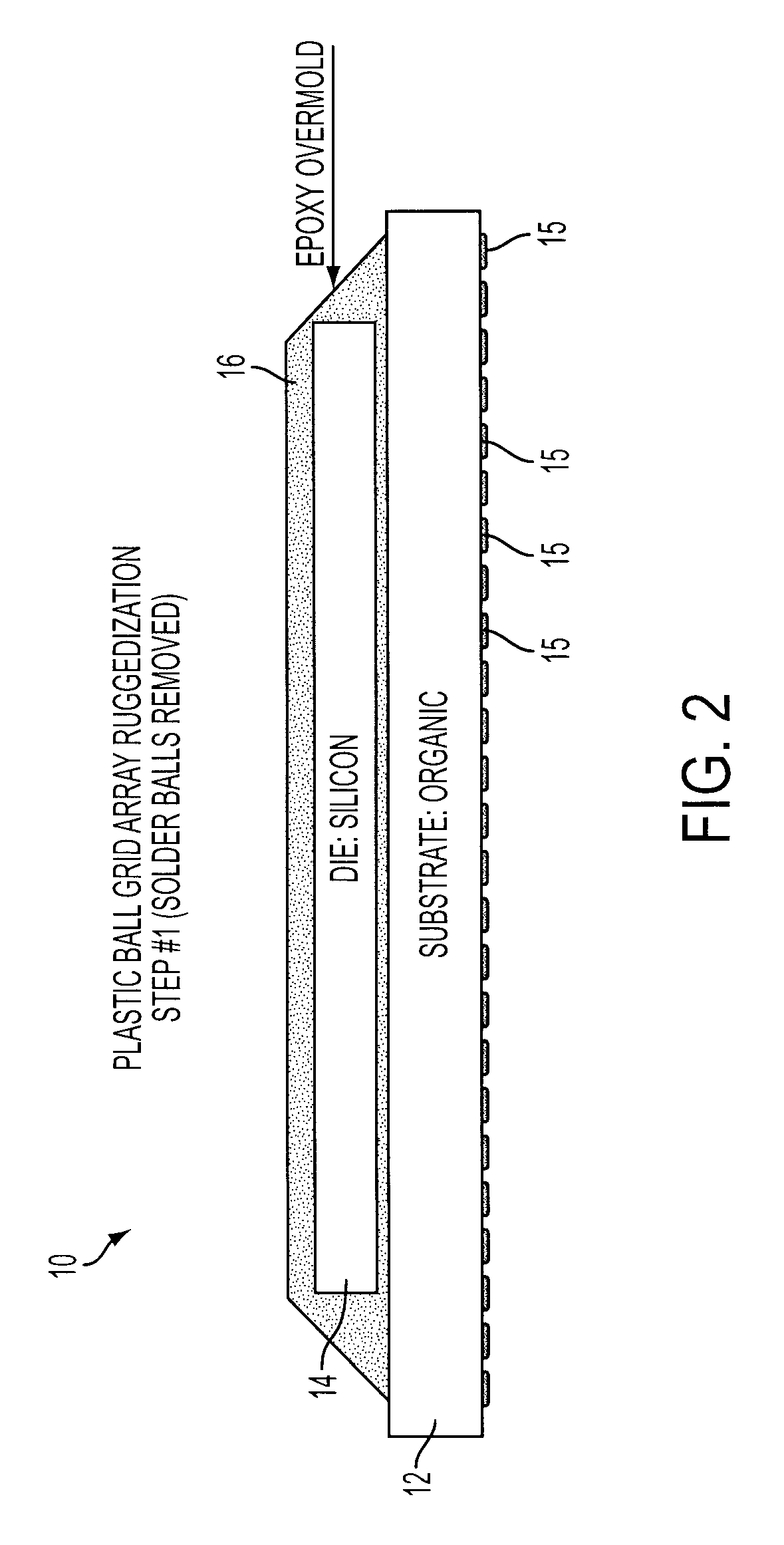Plastic ball grid array ruggedization
a grid array and plastic ball technology, applied in the direction of soldering apparatus, semiconductor/solid-state device details, manufacturing tools, etc., can solve the problems of premature failure in dod field environments, affecting the alignment of columns, and high levels of solder joint strain, so as to reduce warping, increase the reliability of the solder joint, and the effect of flatness over temperatur
- Summary
- Abstract
- Description
- Claims
- Application Information
AI Technical Summary
Benefits of technology
Problems solved by technology
Method used
Image
Examples
Embodiment Construction
[0025]The present invention provides a thin metal or ceramic plate which is attached to the top of a plastic grid arrays (PBGA) as a stiffener to maintain the PBGA's flatness over a temperature range during a column attach process so that the array of columns attached to the PBGA maintain alignment for future attachment on the printed wiring board surface.
[0026]FIG. 1 is a plastic ball grid array 10 as procured which, in this example, includes an organic substrate 12, a silicon die 14, an epoxy overmold 16 and SnPb or Pb free solder ball interconnects 18 along the bottom. The die is attached to the substrate with either wire bonds or C4 interconnects. The PBGA comes from the supplier with SnPb or Pb free solder balls. In cases where the mismatch of thermal expansions between the PBGA and printed wiring board are excessive, it would be desirable for the user to add columns to provide additional strain relief, but due to warping of the PBGA when exposed to high temperatures, this cann...
PUM
| Property | Measurement | Unit |
|---|---|---|
| temperature | aaaaa | aaaaa |
| stiffness | aaaaa | aaaaa |
| perimeter | aaaaa | aaaaa |
Abstract
Description
Claims
Application Information
 Login to View More
Login to View More - R&D
- Intellectual Property
- Life Sciences
- Materials
- Tech Scout
- Unparalleled Data Quality
- Higher Quality Content
- 60% Fewer Hallucinations
Browse by: Latest US Patents, China's latest patents, Technical Efficacy Thesaurus, Application Domain, Technology Topic, Popular Technical Reports.
© 2025 PatSnap. All rights reserved.Legal|Privacy policy|Modern Slavery Act Transparency Statement|Sitemap|About US| Contact US: help@patsnap.com



